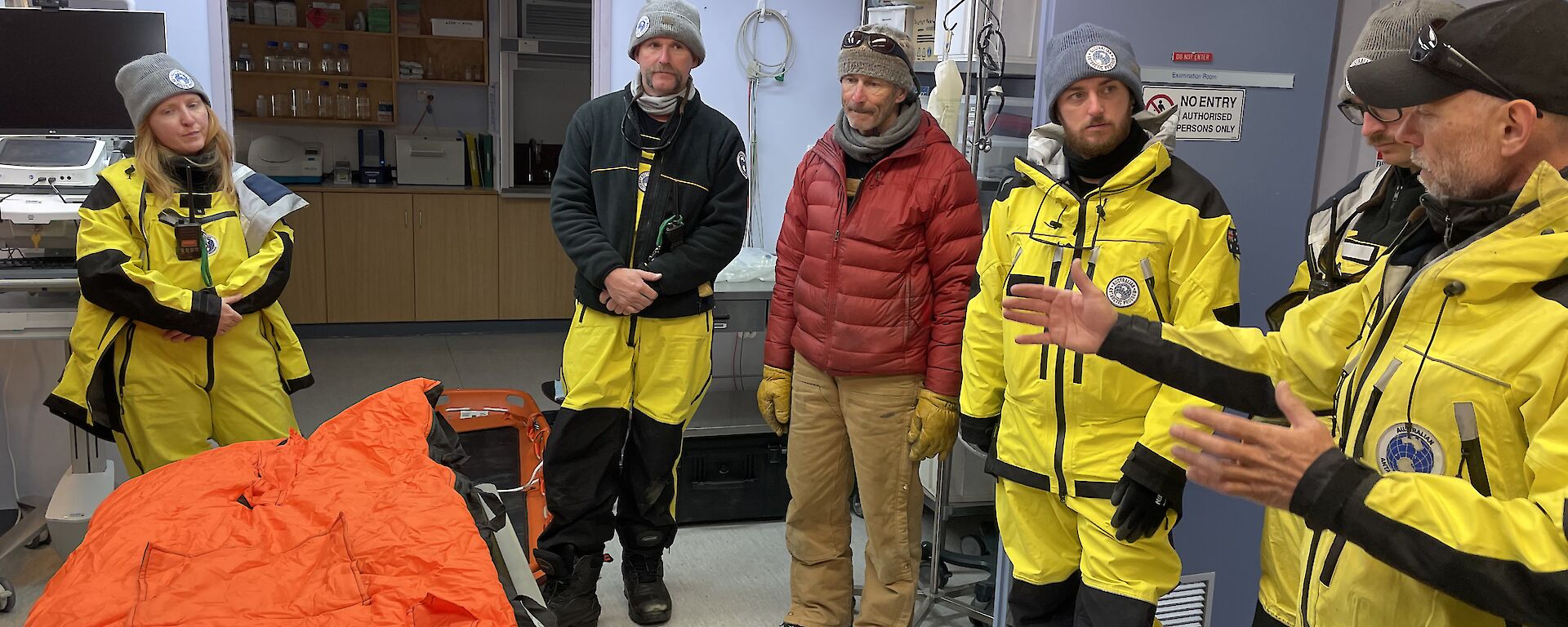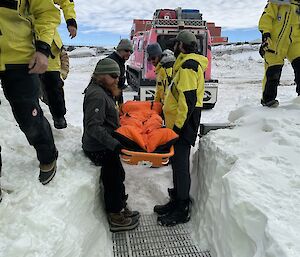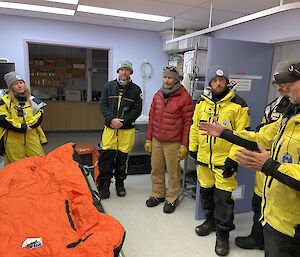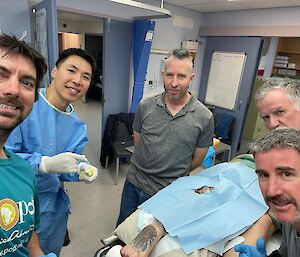This week we take a dive into how we stay healthy on station! Before even jetting off for a year to Antarctica there is an incredible amount of background work to make sure expeditioners are as healthy as possible. But when we arrived a few weeks ago, we were amazed to find a fantastic medical facility filled to the brim with equipment and supplies. It is often said it can be quicker to transport a person from the International Space Station to a hospital, than it is from an Antarctic research station!
My first job arriving was to orient myself, with the help of the out-going doctor who spent a week immersing me with tips and tricks of the trade down south. Next came mock scenarios involving the entire station, running through a “search and rescue” of an expeditioner, getting them from the freezing deep field to working out how we would manage them at the medical facility.
Part of my role as the doctor is to train up some of my colleagues who form my “lay surgical assistant” or LSA team. This year I’m lucky to have the chef, carpenter, electronics engineer and storeman to help me with everything from basic dentistry to anaesthetising and operating on patients.
As summer approaches, this week has seen a dramatic change in scenery. The white blanket that surrounds us begins to melt, as if removing the outer layer of icing from an underlying brown rocky cake (did I mention the food is great here?!). This brings new challenges and risks of slipping, compounded by 63 knot blizzards over the past few days. So this week we have been focussing on preventing and managing ice related injuries!
Of course, the ideal thing is to avoid dangerous ground, but this is not always possible; despite our teams doing what they can to make the terrain as safe as possible each day. So, the main things we do down south is to ensure that correct and appropriate clothing is worn. Goggles prevent debris blowing into eyes, and warm wind proof layers maintain body temperatures. Shoe spikes are attached to sturdy footwear to ensure a firm grip on icy surfaces, frozen from snowmelt into glassy hazards each morning.
Despite knowing this, the reflection of the week is understanding that the real trick down here is in adjusting one’s behaviour from what you’d normally do on a windy, icy day back in Australia, to match the riskier conditions out here. Initially, putting on shoe spikes on what seems like a sunny, slightly frosty day seems dramatic. But once that adjustment in mindset has been made, it makes total perfect, safe sense!
Until next week…stay safe and well!
Dr Bosco Li





